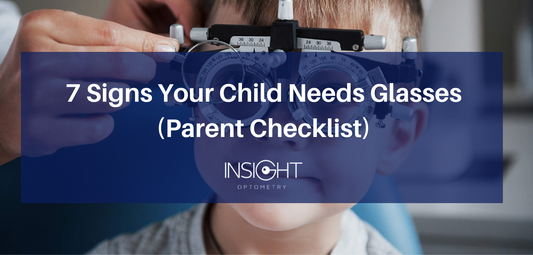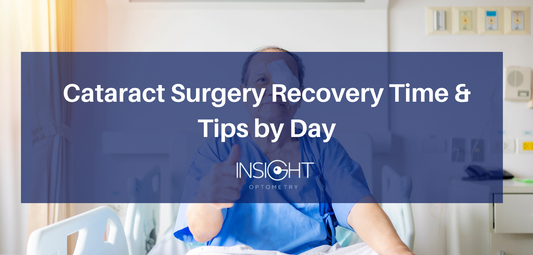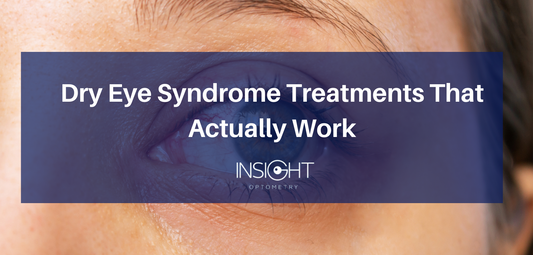Dry eye syndrome can feel like having sand thrown in your eyes. You can often feel intense itchiness, burning or stinging sensations, blurred vision, and redness.
Unfortunately, dry eye syndrome is a relatively common eye condition, and for many folks in Nova Scotia, it can be unpleasant, uncomfortable, and frustrating to live with.
So, what can you do about it, and are there any dry eye syndrome treatments that actually work and offer long-term relief?
Let’s find out!
Key Takeaways
-
Prescription meds like Restasis®, CEQUA, and Xiidra® calm inflammation and help your eyes make more tears.
-
Autologous serum drops made from your own blood can soothe even the worst dry eye cases.
-
In-office tech like iLux® Treatment, Jett Plasma® Pen, and LipiFlow® clears out clogged oil glands and improves tear quality.
-
Simple daily care, like warm compresses and omega-3s, keeps symptoms in check when used consistently.
Dry Eye Syndrome & Treatments That Work
Dry eye syndrome can occur when your eyes are unable to produce enough quality tears for adequate lubrication or there is an imbalance in the tears. The lack of lubrication results in discomfort, inflammation, and possible damage to the eye itself.
It is a common condition that can vary greatly in terms of intensity. Those with mild conditions may experience dry eyes in certain environments, which can cause general discomfort. Nothing a bottle of over-the-counter artificial tears can’t solve.
However, severe cases of dry eye syndrome are more challenging to deal with. Patients often experience intense pain, stinging, burning, and even visual disturbances.
Luckily, there are many treatments available for dry eye syndrome, with some a lot more effective than others.
Here’s a table that helps break it all down:
|
Treatment |
Effectiveness |
Healing Time / Onset of Relief |
Severity of Condition |
|
Artificial Tears (Lubricant Drops) |
Mild to moderate relief for many patients |
Immediate to a few days |
For mild or occasional dry eyes |
|
Preservative-Free Drops |
More effective for sensitive eyes or frequent use |
Immediate to a few days |
For frequent use or those sensitive to preservatives |
|
Gel Drops / Ointments |
Longer-lasting moisture, especially at night |
Immediate overnight relief |
Mild to moderate symptoms, especially nighttime dryness |
|
Warm Compresses & Eyelid Hygiene |
Improves meibomian gland function |
Relief within days to weeks |
For evaporative dry eye or Meibomian Gland Dysfunction (MGD) |
|
Omega-3 Fatty Acid Supplements |
May reduce inflammation and improve tear quality |
Several weeks to notice improvement |
Mild to moderate, often used alongside other treatments |
|
Punctal Plugs |
Reduces tear drainage, increasing moisture |
Relief within days |
Moderate to severe, especially when drops aren’t enough |
|
Prescription Anti-Inflammatory Drops (e.g., Cyclosporine / Lifitegrast) |
Reduces ocular surface inflammation |
4–12 weeks for full effect |
Chronic moderate to severe dry eye |
|
Steroid Eye Drops (short-term use) |
Strong anti-inflammatory effects |
Rapid relief (days) |
Severe flare-ups or acute inflammation (short-term only) |
|
iLux® Treatment |
Treats meibomian gland dysfunction (MGD) |
2-4 weeks for full effect |
Moderate to severe evaporative dry eye |
|
BlephEx® Eyelid Treatment |
Removes debris and biofilm from eyelids |
Immediate to short-term relief |
Chronic blepharitis or meibomian gland dysfunction |
|
Jett Plasma® Pen |
Restores the oil layers of tears |
Immediate relief that lasts for 2 years or more |
Moderate to severe meibomian gland dysfunction |
|
Scleral Contact Lenses |
Protects the cornea and retains moisture |
Relief upon consistent wear |
Severe dry eye, including Sjögren’s syndrome or post-surgical dryness |
While the quickest and easiest fix for dry eyes is grabbing an over-the-counter bottle of preservative-free artificial tears and hoping for the best, this isn’t a long-term solution, as it doesn’t address the underlying cause of your dry eyes.
On the other hand, iLux treatment and Jett Plasma® Pen offer long-term solutions by directly treating the underlying cause of your symptoms.
What’s Causing Your Dry Eye, Anyway?
To fix the problem, you’ve got to know what’s causing it.
Let’s start by understanding the two main types of dry conditions:
-
Evaporative Dry Eye: Your tears dry up too fast.
-
Aqueous-Deficient Dry Eye: Your eyes just don’t make enough tears.
So, why do these occur?
Well, common causes include:
-
Meibomian Gland Dysfunction (MGD)
-
Inflammation
-
Medications
-
Aging
-
Autoimmune issues
-
Long days on screens
-
Windy or dry environments (looking at you, Nova Scotia winters)
Identifying what’s causing your eyes to dry up is the first step to finding a treatment that actually works.
That’s why testing matters.
Comprehensive eye exams conducted by highly trained optometrists look at your tear film, oil glands, and inflammation levels to help nail the cause of your dry eyes. They then compile a treatment plan that is tailor-made for you.
Top 5 Dry Eye Syndrome Treatments That Actually Work
-
iLux® Treatment for Dry Eye Disease
The most recommended treatment for MGD is warm compression to the eyelids.
iLux is a technology that takes this age-old method and makes it a whole lot more effective.
iLux uses an LED-based heat source to warm the inner and outer surface of the eyelids. This helps to melt the waxy secretions trapped inside the meibomian glands making it a highly effective treatment for Meibomian Gland Dysfunction (MGD) and dry eye syndrome.
The treatment can take less than 10 minutes and patients report significant improvement in the signs and symptoms of MGD and dry eyes two to four weeks post-treatment.
-
Jett Plasma® Pen
Jett Plasma® Pen is another revolutionary technology that uses plasma energy to restore your tear film’s oil layer, improving gland function and reducing inflammation.
This makes this a highly effective treatment for MGD and evaporative dry eye symptoms.
Jett Plasma® Pen is a non-invasive, non-surgical procedure that is safe and can offer relief from dry eye syndrome for at least six months to several years.
-
Prescription Drops
Prescription drops can help with not just symptoms but also healing.
Here are some of the top prescription drops recommended by an optometrist:
-
Restasis® and CEQUA (cyclosporine), Xiidra® (lifitegrast): Eases inflammation, and helps you make more tears
-
Autologous Serum Drops (ASEDs)
If prescription drops aren’t cutting it, ASEDs can be recommended.
These specialized eye drops are highly effective for those with severe dry eye syndrome. In this condition, artificial tears do very little as they don’t contain vital nutrients and growth factors that help heal and moisturize.
To do that, ASEDs are made from a small sample of your own blood. The blood is heavily processed and diluted with sterile saline to create a serum that is then refined into sterile eye drops.
While these aren’t first-line treatments, they can be life-changing for the right patients.
-
Device-Based Treatments
Advancements in technology and medical research have led to the innovation of devices that can provide much-needed relief and help your tear system work better long-term.
The top devices used by clinics across Canada include:
-
iLux®: heat therapy and compression that helps melt waxy secretions and open up clogged meibomian glands.
-
Jett Plasma® Pen: uses plasma energy to stimulate meibomian glands and restore the lipid layer of the tear film.
-
LipiFlow®: A gentle massage and heat combo that clears out stuck oils.
-
At-Home Remedies That Work!
Natural remedies and healthy lifestyle choices can also make a big difference in reducing symptoms and long-term healing.
Top at-home remedies that work include:
-
Warm compresses: Use a clean washcloth or a heated eye mask
-
Omega-3 consumption: Use fish oil supplements (aim for 1000 mg or more daily)
-
Eyelid wipes: Help keep those lash lines clean and free of demodex mites
-
Environmental tweaks: Using a humidifier, taking screen breaks, wearing sunglasses
-
Aruna light - Advanced red light eye therapy that improves blood flow
Pro Tip: Demodex mites can live on your lashes and worsen dry eye. Check out products like I-LID ‘N Lash Hygienic eyelid Wipes and Tea Tree Eyelid & Facial Cleanser if you’ve got redness, itching, or crusty lids.
Choosing The Right Treatment Plan for You
If artificial tears aren’t cutting it or your eyes always feel sore, blurry, or itchy, it’s time to consult with a professional.
At Insight Optometry, we offer full diagnostic testing, comprehensive eye exams, customized plans, and the latest treatments, all under one roof.
Whether you’ve had dry eyes for years or it’s just started, we’re here to help. From device-based treatments to at-home care, we’ll work with you to find a plan that fits your life, your eyes, and your goals.
Book an appointment or call us today to learn more. You can also visit our clinic at Cambridge Suites Plaza, 1575 Brunswick St., Halifax, NS.
FAQs
Q1) Is iLux safe for everyone?
iLux is a safe and non-invasive solution for MGD. But, it isn’t for everyone. Your eye care professional can assess your eligibility and whether the treatment is right for you during a dry eye assessment consultation.
Q2) What’s the best type of omega-3 for dry eye?
Look for high-quality triglyceride-form fish oil with at least 1000 mg of EPA and DHA combined.
Q3) Can kids get dry eyes?
Yes, especially with lots of screen time or if they have allergies. We tailor care for children, too.
Q5) Does MSI cover dry eye treatments?
MSI (Nova Scotia's provincial health plan) doesn’t usually cover advanced treatments like iLux or Jett Plasma Pen, but we’ll help you understand your options and explore any private coverage you might have.




